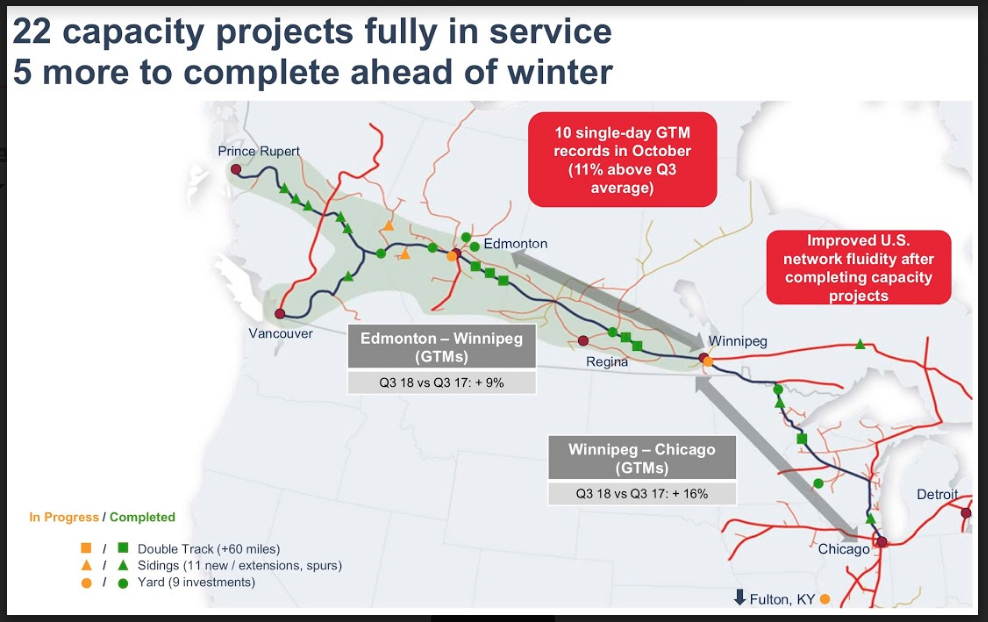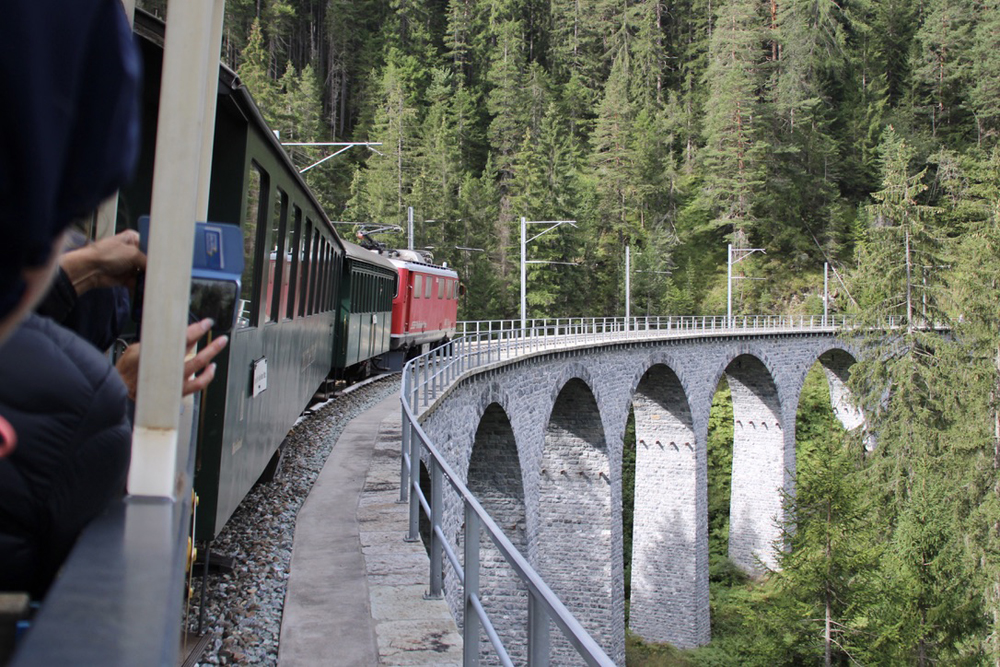CN has now placed in service 22 of its 27 capacity-expansion projects on its main line linking western Canada with Chicago.
CN has been adding track capacity, locomotives, and crews, partly to catch up to strong demand that swamped the railroad beginning last summer and partly to keep pace with continued growth expected to hit its rails by spring 2019.
Tonnage on CN’s spine between Edmonton and Winnipeg was up 9 percent in the third quarter, Chief Operating Officer Mike Cory said on the railway’s earnings call on Tuesday.
And in October, CN set 10 single-day records for gross ton-miles handled between Edmonton and Winnipeg, he says. Yet average train speed on the corridor increased 7 percent over the past week.
“Our dedicated team of railroaders delivered over 80 percent of the capacity projects we had planned for this year,” Cory says. “And delivering these capital programs has been a significant challenge. The engineering team not only needed to deliver one of the biggest capital programs in history, but they also delivered the majority of our basic capital program in the busiest part of our network. They did this with our transportation team, who gave them time to work despite having to deal with record volumes in those corridors.”
Railroad officials also expect to complete yard capacity projects in Edmonton and Winnipeg, along with a pair of siding extensions on routes in Alberta that serve crude oil and coal shippers in the next several weeks.
CN has taken delivery of 30 of 60 new locomotives from General Electric, with the remainder due on the property by the end of the year. CN is returning 24 leased locomotives. And by the end of March it expects to receive the first 70 units of 140 locomotives GE will deliver next year.
Some 480 new conductors entered service in the third quarter, Cory says, with 700 conductors still in the training pipeline.
Overall, CN’s key operating metrics held relatively steady in the third quarter amid rising volume and the extensive trackwork projects. Terminal dwell and train velocity both decreased 1 percent compared to the second quarter.
CN executives have said the additional track capacity, locomotives, and crews will enable the railroad to return to normal operating performance by the end of the year.
Dwell is still 6 percent higher than a year ago, while train speeds are 12 percent slower than the third quarter of last year.
CN coagulated on its western corridor last year as traffic grew twice as fast as expected beginning in mid-2018. The railroad is spending $400 million this year to boost capacity between western Canada and Chicago and expects to add more double track and passing sidings in 2019.















Neenah, Wisc., where the old Soo Line(Whiskey Central) alignment right-angle bends from North-South to the West remains a bottleneck. Casual observation often reveals a train or two motionless, even the “hot” stacker.
Some laws of physics never chance! Especially when it comes to keeping a train on the tracks, when going around a curve.